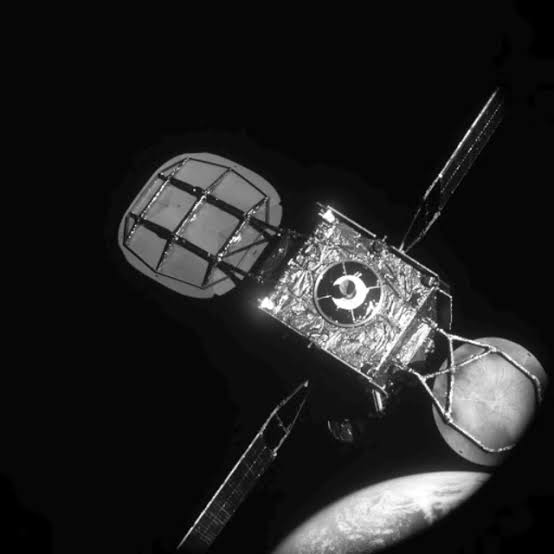Someone moved the UK’s oldest satellite and there appears to be no record of exactly who, when or why.
Launched in 1969, just a few months after humans first set foot on the Moon, Skynet-1A was put high above Africa’s east coast to relay communications for British forces.
When the spacecraft ceased working a few years later, gravity might have been expected to pull it even further to the east, out over the Indian Ocean.
But today, curiously, Skynet-1A is actually half a planet away, in a position 22,369 miles (36,000km) above the Americas.
Orbital mechanics mean it’s unlikely the half-tonne military spacecraft simply drifted to its current location.
Almost certainly, it was commanded to fire its thrusters in the mid-1970s to take it westwards. The question is who that was and with what authority and purpose?
It’s intriguing that key information about a once vital national security asset can just evaporate. But, fascination aside, you might also reasonably ask why it still matters. After all, we’re talking about some discarded space junk from 50 years ago.
“It’s still relevant because whoever did move Skynet-1A did us few favours,” says space consultant Dr Stuart Eves.
“It’s now in what we call a ‘gravity well’ at 105 degrees West longitude, wandering backwards and forwards like a marble at the bottom of a bowl. And unfortunately this brings it close to other satellite traffic on a regular basis.
“Because it’s dead, the risk is it might bump into something, and because it’s ‘our’ satellite we’re still responsible for it,” he explains.
If a satellite died at 40E it would drift to the nearest gravity well, which is 75E.
Dr Eves has looked through old satellite catalogues, the National Archives and spoken to satellite experts worldwide, but he can find no clues to the end-of-life behaviour of Britain’s oldest spacecraft.
It might be tempting to reach for a conspiracy theory or two, not least because it’s hard to hear the name “Skynet” without thinking of the malevolent, self-aware artificial intelligence (AI) system in The Terminator movie franchise.
But there’s no connection other than the name and, in any case, real life is always more prosaic.
What we do know is that Skynet-1A was manufactured in the US by the now defunct Philco Ford aerospace company and put in space by a US Air Force Delta rocket.
“The first Skynet satellite revolutionised UK telecommunications capacity, permitting London to securely communicate with British forces as far away as Singapore. However, from a technological standpoint, Skynet-1A was more American than British since the United States both built and launched it,” remarked Dr Aaron Bateman in a recent paper on the history of the Skynet programme, which is now on its fifth generation.
This view is confirmed by Graham Davison who flew Skynet-1A in the early 70s from its UK operations centre at RAF Oakhanger in Hampshire.
“The Americans originally controlled the satellite in orbit. They tested all of our software against theirs, before then eventually handing over control to the RAF,” the long-retired engineer told me.
“In essence, there was dual control, but when or why Skynet-1A might have been handed back to the Americans, which seems likely – I’m afraid I can’t remember,” says Mr Davison, who is now in his 80s.
BBC








